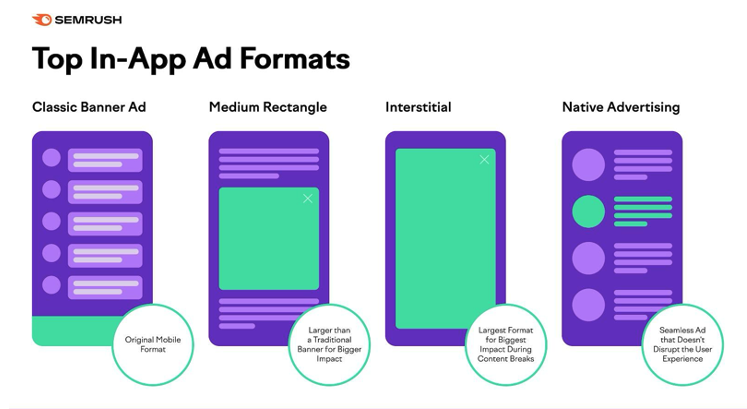In this year 2024 – which, by the way, is moving faster than many of us would like – social media advertising continues to evolve, social media advertising continues to evolve, adapting to new trends, technologies and consumer expectations. But are we doing it in a meaningful way? Do we know all the possibilities on the table depending on the platform? More importantly… Is there a strategy behind what we do or do we just want quick results?
Taking care of organic before moving to paid media
Paid media or network advertising is phenomenal. We invest to see better results in a given campaign: more views, more clicks, brand awareness, leads, registrations. Great. A shot that can last more or less time, but always with an eye on the short term. That’s when we should ask ourselves: are we taking care of our organic strategy? Are we thinking in the long term? Lately, we have come across many cases in which the intention is to play everything on a high-budget. However, the organic side of those networks is neglected, without periodicity, without strategy. In other words, meaningless. The key is to start taking care and pampering the organic to have a solid foundation in the long term, and in order to get those results we expect in the campaigns, but in a much stronger way and with ‘foundations’. Once we have this clear, which I think it was important to mention, let’s get into some theory about advertising on social media.
Types of social media advertising
Obviously the first thing we need to be aware of is the various social media ad formats (in general ) that allow us to reach our audience more effectively. Some of the most commonly used formats (regardless of platform) include:
- Image ads: used on all social platforms, these ads can be either still images or GIFs that capture the user ‘s attention quickly.
- Video ads: very effective for generating engagement, videos allow you to tell brand stories in a creative and engaging way. They are ideal for platforms like Instagram and TikTok, where video dominates the content. By the way,did you know that, according to Google, paid ads on YouTube for mobile are 84% more likely to grab viewers ‘ attention than traditional TV ads?
- Carousel or setads: display multiple images or videos in a single ad, which can increase interaction by allowing the user to explore more content. On LinkedIn you can find this guide to making carousel ads very useful.
- Dynamic ads: designed to encourage interaction, such as Instagram stories or reels or TikTok videos .
- Direct message advertisements: sponsored messages sent through platforms such as Facebook Messenger or LinkedIn InMail, which allow for more personalised communication. They are not as common and are much more invasive… so you have to be very careful when opting for this format.

Source: SemRush.
What should we take into account when running a paid social a paid social media campaign?
As I said at the beginning, without a strategy, without a solid knowledge and work that only gives you the -organic- day to day of your account, you are more than likely to end up ‘throwing’ money away. These are some of the basic points to keep in mind keep in mind when putting together your paid strategy and that you probably already have clear if you have worked well on the organic part.
- Know your audience
To maximise the impact of your social media ads, it is crucial to have a thorough understanding of your target audience. This involves not only understanding their basic demographics – such as age, gender and location – but also delving into more detailed aspects such as their interests, but also delving into more detailed aspects such as their interests, online behaviour and consumption habits. In addition, it is important to it is important to do research and analyse the data available from your previous campaigns (if you have any, of course). Platforms like Meta or LinkedIn Business or Google Analytics (even Search Console) offer valuable data about your audience ‘ s behaviour, such as the times of day they are most active, what type of devices they use and how they interact with your content. Leveraging this information will allow you to adjust your campaigns to be more effective and targeted.
- Define clear objectives
Defining clear objectives is an essential step for any social media advertising campaign. A clear goal not only gives you direction, but also allows you to measure the success of your efforts. Objectives should be specific, measurable, achievable, relevant and time-bound (SMART). For example, rather than simply wanting to ‘increase traffic’, a SMART goal would be ‘increase website traffic by 20% in the next three months’. Some common goals for social media advertising include increasing brand visibility, generating traffic to a specific web page, encouraging user engagement through comments, likes or shares, increasing sales of a product or service, or capturing new leads. Establishing these objectives from the outset will allow you to design your campaigns more effectively, selecting the ad formats and platforms that best suit your goals.
- Choose the right platforms
Selecting the right platforms is critical to the success of a social media advertising campaign. Not all platforms are suitable for all brands or audiences. For example, Instagram and TikTok are ideal for brands looking to connect with a younger audience, while LinkedIn is the preferred choice for those looking to attract professionals or B2B companies, for example. If you search on Facebook for someone between 18 and 25 years old… it ‘ s going to be difficult to find them. A good practice is to carry out a preliminary analysis to understand where your audience is. Use analytical tools on each platform to obtain data on user demographics and behaviour. data on user demographics and behaviour. Also, consider the type of content that works best on each platform: Instagram is great for visual and creative content; LinkedIn for professional and leadership content from your company ‘ s spokespeople; and TikTok for short and viral videos.
- Intelligent targeting
Targeting is one of the biggest advantages of social media advertising, as it allows you to target ads to very specific audiences. This involves dividing your audience into smaller groups based on shared characteristics, such as age, geographic location, interests, purchasing behaviour, among others. By doing this, you can personalise your messages to make them more relevant and appealing to each group, thus increasing the chances of conversion. There are various forms of targeting that you can use in your campaigns:
- Demographic targeting: based on characteristics such as age, gender, education level or income.
- Geographic targeting: target your ads to users in specific locations, be they cities, regions or countries.
- Behavioural targeting: based on the user ‘ s past actions, such as pages visited, products purchased or interactions with the brand.
- Interest-based targeting: uses data about users ‘ interests and hobbies to personalise your ads.
Effective targeting will allow you to spend your budget more efficiently, ensuring that your ads reach the people most likely to respond positively when they see them. Remember: it’s not about reaching everyone, it ‘s about reaching the right people.
- Optimise your campaigns continuously
Optimising your social media advertising campaigns is an ongoing process that requires constant analysis of key metrics to fine-tune and improve performance. Some of the most important metrics to track include cost per click (CPC), cost per acquisition (CPA), conversion rate, return on investment (ROI) and audience engagement. To optimise your campaigns, use analytics tools provided by social media platforms such as Meta Business Manager, Google Analytics…. These tools allow you to perform A/B tests to compare different versions of your ads, identify which elements work best and make the necessary adjustments. It is also important to stay on top of emerging trends and platform updates to adjust your strategiesas the rules of the game change.
How to maximise ROI in network advertising
 Maximising the return on investment (ROI) of social media advertising involves a combination of strategies to ensure that every of strategies to ensure that every euro invested generates the highest possible return. Here are some key strategies:
Maximising the return on investment (ROI) of social media advertising involves a combination of strategies to ensure that every of strategies to ensure that every euro invested generates the highest possible return. Here are some key strategies:
- A/B testing and constant tweaking: run A/B tests to compare different versions of your ads, identifying which are most effective. Change variables such as text, images, calls to action (CTAs) or target audience, and adjust according to the results. This practice allows you to identify what works best and continuously optimise your campaigns.
- Strategic budget management: allocate budgets strategically, allocating more resources to campaigns and ads that prove to be more effective. In addition, take advantage of the automatic budget optimisation features offered by some platforms, such as LinkedIn, which automatically adjust spending to maximise results.
- Accurate targeting: as I mentioned before, detailed targeting allows you to target the right audiences, reducing spending on impressions or clicks that are not relevant to your objective. The more specific your targeting is, the more efficient your advertising spend will be .
- Análisis y ajustes basados en datos: analiza continuamente los datos de rendimiento de tus anuncios para identificar patrones y áreas de mejora. Utiliza estos datos para ajustar tus campañas, ya sea aumentando el presupuesto para ciertos anuncios, cambiando el público objetivo, o modificando el contenido del anuncio.
Ultimately, social media advertising is a powerful tool, but only if it is used with a well-defined strategy and a solid organic foundation. Now more than ever, it is crucial that brands move away from quick fixes and focus on building authentic relationships with their audience, understanding their needs, interests and behaviours. Remember that behind every click, every like and every comment, there is a person with their own expectations and desires. Taking advantage of the possibilities offered by social platforms is essential, but doing it with sense and strategy is what will really make the difference. So, the next time you are faced with the challenge of planning a social media advertising campaign, ask yourself: am I seeding for the short term or am I building something that will last? Because in the end, what really matters is not just being visible, but being relevant.




